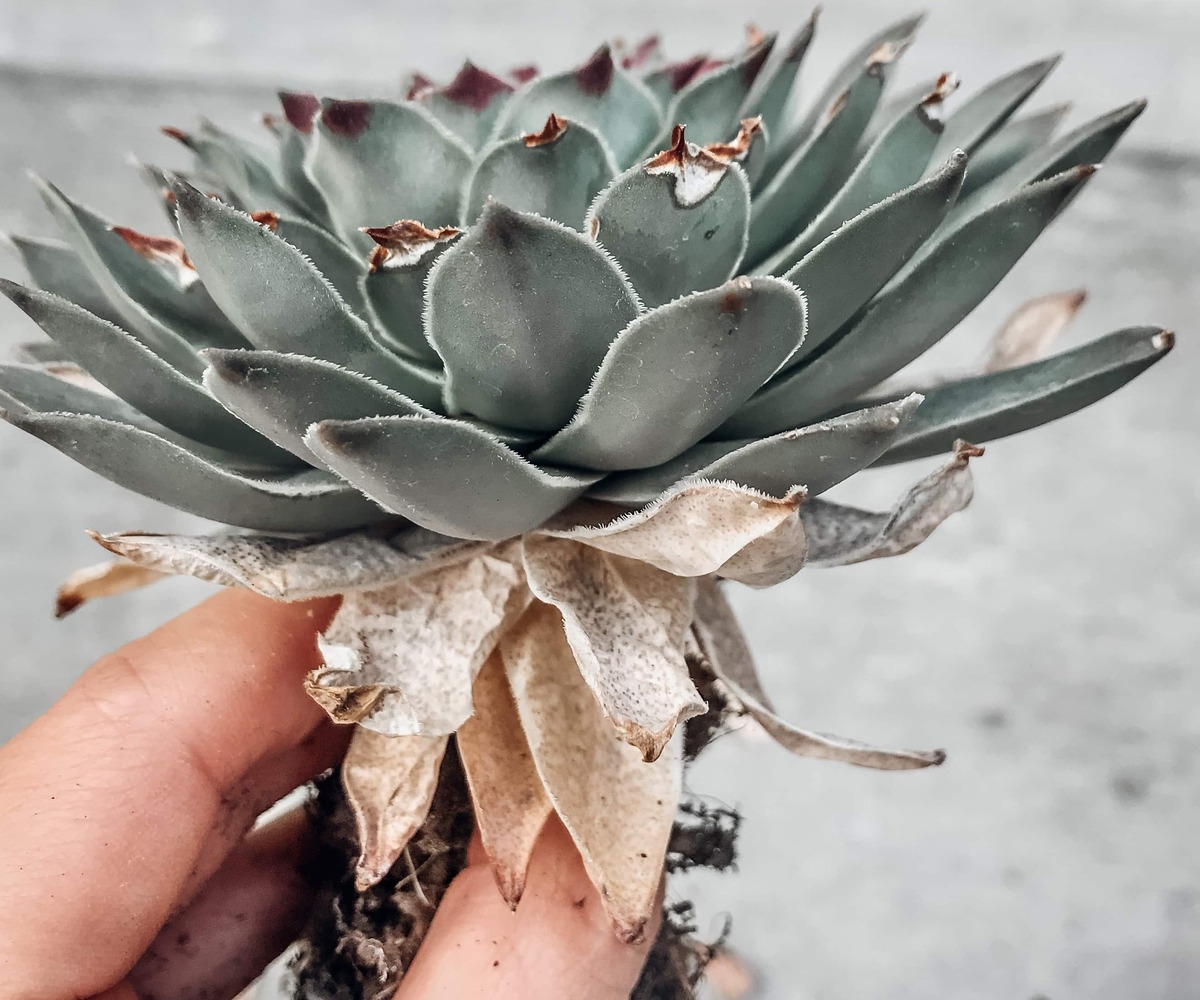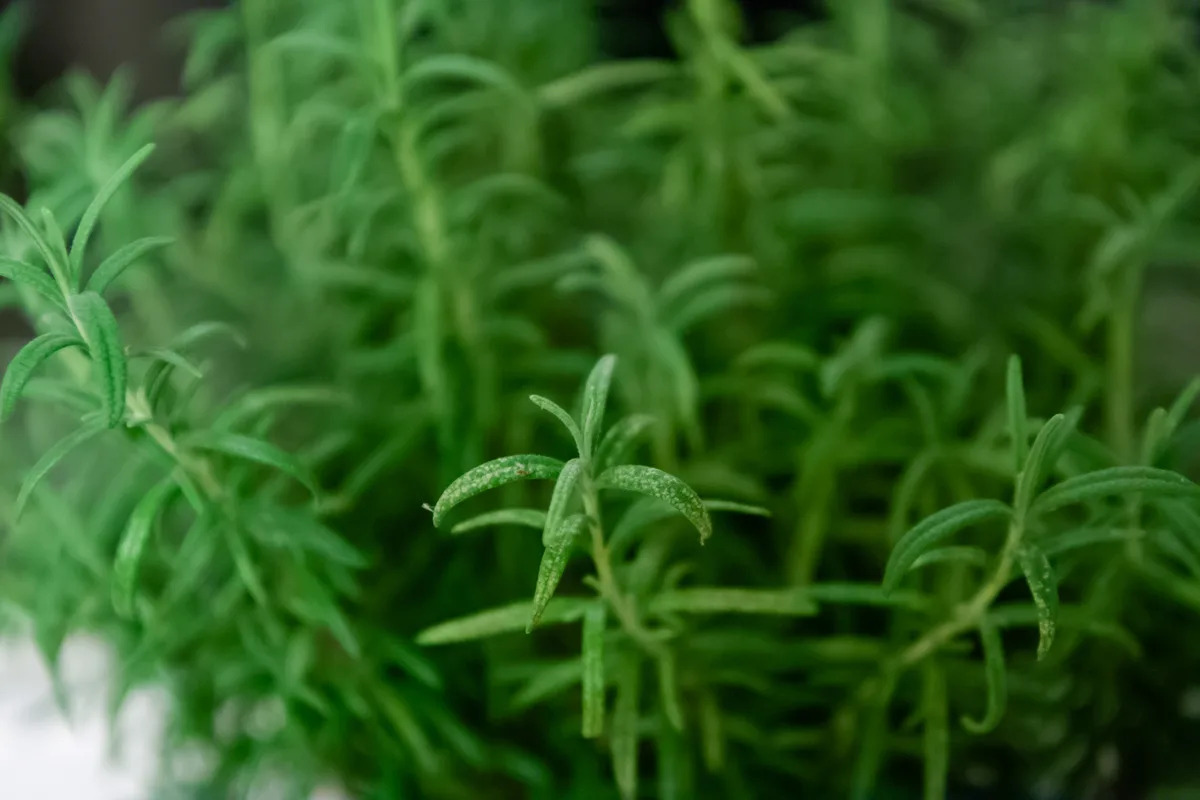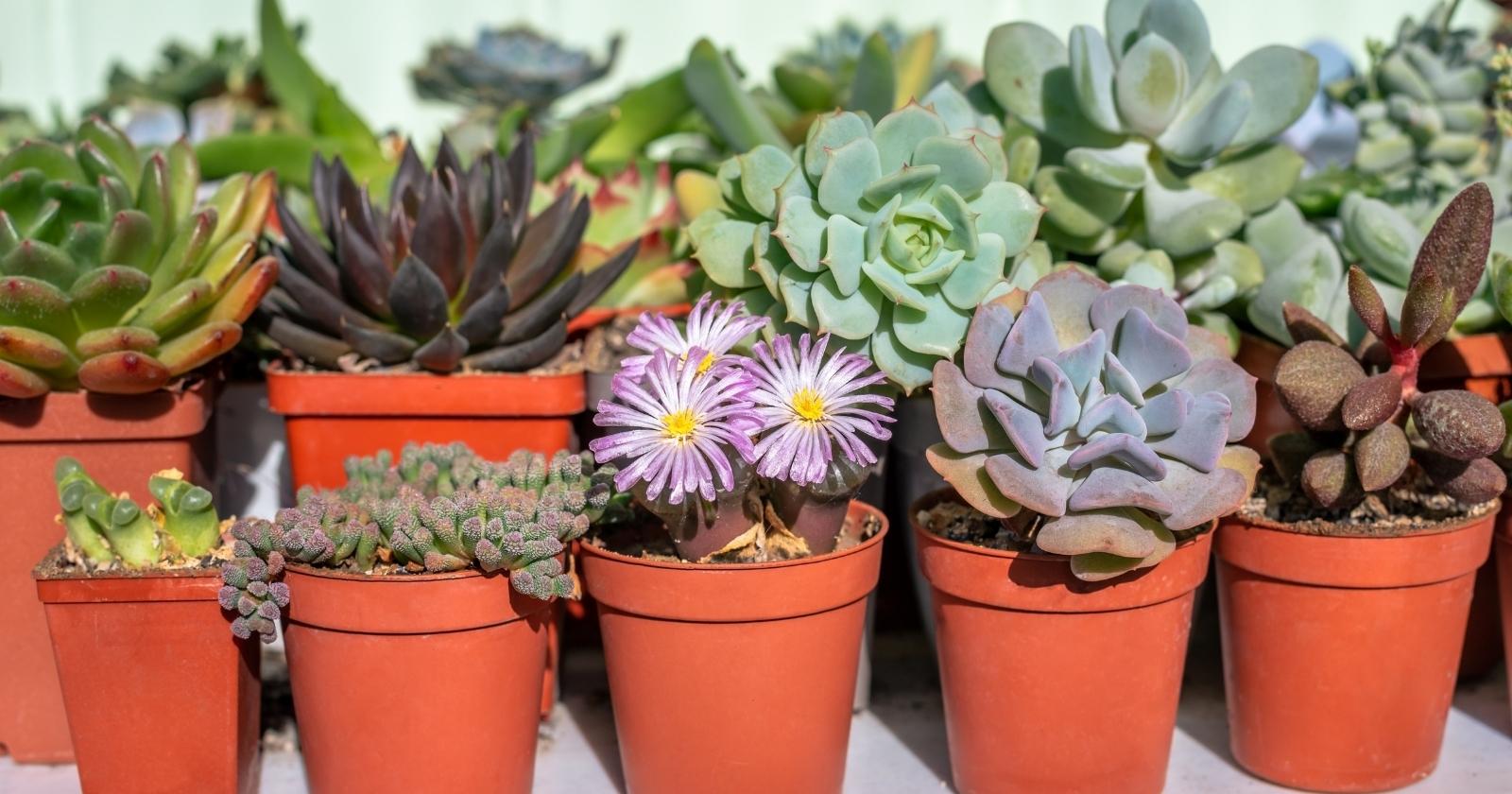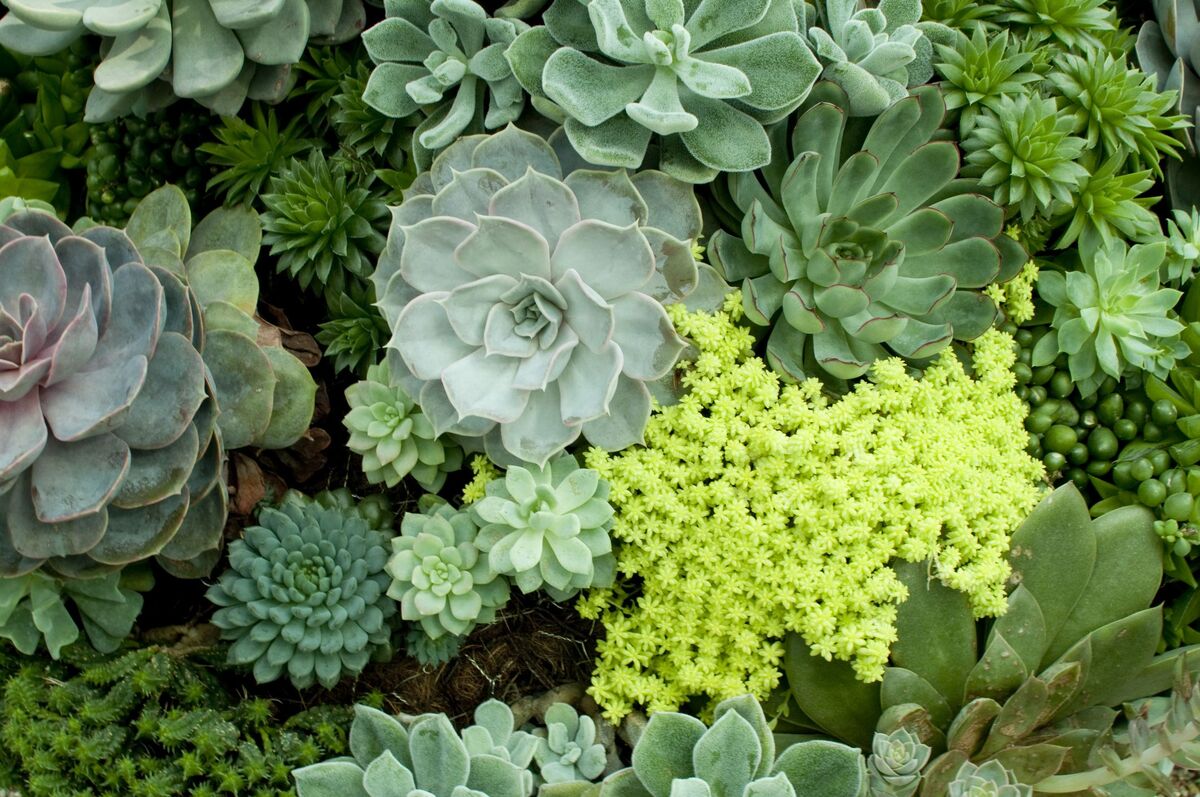Home>Types of Gardening>Ornamental Gardening>Why Are My Succulents Shriveling


Ornamental Gardening
Why Are My Succulents Shriveling
Modified: January 22, 2024
Discover the reasons behind your succulents shriveling and how to revive them with expert tips on ornamental gardening. Keep your succulents healthy and thriving!
(Many of the links in this article redirect to a specific reviewed product. Your purchase of these products through affiliate links helps to generate commission for Chicagolandgardening.com, at no extra cost. Learn more)
Table of Contents
Introduction
Understanding the Health of Your Succulents
Welcome to the fascinating world of ornamental gardening, where succulents reign as the darlings of the plant kingdom. These resilient, water-storing plants have captured the hearts of gardening enthusiasts with their striking appearance and low-maintenance nature. However, even the most experienced succulent aficionados may encounter a common conundrum: Why are my succulents shriveling?
As guardians of these captivating botanical marvels, it is essential to decipher the signals that succulents emit when they are not thriving. The reasons behind their shriveling appearance can vary, encompassing factors such as inadequate water, overwatering, poor drainage, sunburn, pests, and diseases. By delving into the intricacies of succulent care, you can unravel the mystery behind their distress and restore them to their vibrant, plump state.
Join me as we embark on a journey to unravel the mysteries of succulent shriveling. Together, we will explore the nuanced care techniques and remedies that will empower you to nurture your succulents back to their resplendent glory.
Lack of Water
One of the most common reasons for succulents to shrivel is a lack of water. While these hardy plants are renowned for their ability to thrive in arid conditions, they still require adequate hydration to maintain their turgidity and vitality. When succulents are deprived of water, they begin to show visible signs of distress, such as wilting, drooping, and shrinking. The leaves may appear deflated and lose their characteristic plumpness, signaling the urgent need for hydration.
To address this issue, it is crucial to establish a consistent watering routine that aligns with the specific needs of your succulents and the prevailing environmental conditions. Factors such as the type of succulent, the potting medium, and the climate can influence the frequency of watering. Observing the soil moisture level and the plant’s appearance can provide valuable insights into its water requirements. When watering, ensure thorough saturation of the soil, allowing excess water to drain out to prevent waterlogging, which can exacerbate the problem.
Moreover, incorporating a well-balanced succulent fertilizer can support the plant’s resilience and vigor, aiding in the retention of moisture and essential nutrients. By addressing the lack of water through mindful observation and tailored care, you can rejuvenate your succulents and witness their remarkable capacity for recovery.
Overwatering
While the notion of underwatering is a prevalent concern for succulent enthusiasts, the opposite end of the spectrum, overwatering, can also lead to detrimental consequences for these resilient plants. Overzealous watering, often stemming from a well-intentioned desire to provide ample moisture, can disrupt the delicate equilibrium that sustains succulents. The roots suffocate in waterlogged soil, impeding their ability to absorb oxygen and leading to a cascade of adverse effects.
Signs of overwatering manifest in various ways, with the most conspicuous being the softening and wilting of the succulent’s leaves. The once plump and firm foliage loses its turgidity, appearing translucent and mushy. Additionally, the onset of root rot, characterized by a foul odor and dark, mushy roots, underscores the perils of excessive moisture. To mitigate the impact of overwatering, it is imperative to reassess the watering regimen and implement corrective measures.
Allowing the soil to thoroughly dry between waterings is pivotal in preventing overwatering. This practice promotes healthy root respiration and discourages the onset of root rot. Repotting the succulent in a well-draining soil mixture and ensuring the use of pots with drainage holes can further safeguard against waterlogged conditions. By exercising restraint and adopting a mindful approach to watering, you can shield your succulents from the perils of overhydration and foster an environment conducive to their flourishing.
Poor Drainage
Another factor that can contribute to the shriveling of succulents is poor drainage. Succulents, with their innate ability to store water in their leaves and stems, are particularly susceptible to the perils of waterlogged soil. Inadequate drainage impedes the swift removal of excess water, subjecting the roots to prolonged saturation and diminishing their capacity to respire effectively. As a result, the roots suffocate, leading to a decline in the overall health of the plant.
Recognizing the signs of poor drainage is pivotal in addressing this issue. If the soil remains consistently damp or soggy, despite adhering to a balanced watering regimen, it may signify a drainage problem. Additionally, the presence of mold or mildew on the soil’s surface and a foul odor emanating from the pot herald the need for remedial action.
To ameliorate poor drainage, repotting the succulent in a well-aerated, fast-draining soil mixture is paramount. Incorporating materials such as perlite, coarse sand, or pumice can enhance the soil’s porosity, facilitating the swift evacuation of excess moisture. Furthermore, opting for pots equipped with drainage holes expedites the outflow of water, mitigating the risk of waterlogging.
By addressing the issue of poor drainage, you can fortify the foundation for your succulents’ well-being, ensuring that they are poised to thrive in an environment conducive to their unique requirements.
Sunburn
Contrary to the common perception that succulents are impervious to the sun’s intense rays, these resilient plants can indeed fall victim to sunburn under certain conditions. Sunburn manifests as discolored or bleached patches on the succulent’s leaves, signaling the detrimental impact of excessive sunlight. While succulents thrive in bright, indirect light, prolonged exposure to scorching, direct sunlight, especially during the peak hours of the day, can induce stress and damage to the plant’s photosynthetic machinery.
Identifying the symptoms of sunburn is crucial in addressing this issue. The affected areas of the leaves may exhibit a whitish or brownish discoloration, often accompanied by a papery texture. Additionally, the leaves may appear desiccated and shriveled, indicative of the sun’s desiccating effects.
To shield succulents from the perils of sunburn, strategic placement is paramount. Positioning the plants in locations that offer ample bright, indirect light while affording protection from the harsh midday sun can mitigate the risk of sunburn. This can be achieved by situating the succulents near east or west-facing windows, where they can bask in the gentle morning or late afternoon sunlight.
Moreover, implementing gradual acclimatization to direct sunlight for newly acquired or relocated succulents can bolster their resilience and diminish the likelihood of sunburn. By judiciously managing their exposure to sunlight, you can safeguard your succulents from the adverse effects of excessive solar radiation and preserve their resplendent appearance.
Pests and Diseases
Despite their robust nature, succulents are not impervious to the pernicious influence of pests and diseases, which can precipitate the shriveling and deterioration of these resilient plants. Pests such as mealybugs, spider mites, and aphids can inflict substantial damage by sapping the succulent’s vital fluids and impeding its growth. Additionally, fungal infections and bacterial diseases pose a formidable threat, manifesting in symptoms such as discoloration, lesions, and wilting.
Vigilance is paramount in identifying and addressing pest infestations and diseases promptly. Inspecting the succulents regularly enables the early detection of pests such as mealybugs, which appear as white, cottony masses on the plant’s foliage, or spider mites, characterized by fine webbing and stippled leaves. Furthermore, observing changes in the succulent’s appearance, such as yellowing, browning, or withering of the leaves, can herald the onset of diseases.
To combat pests, employing natural remedies such as neem oil or insecticidal soap can effectively mitigate infestations while minimizing the impact on beneficial insects. Additionally, isolating affected succulents can prevent the spread of pests to healthy plants, facilitating targeted treatment and containment.
For fungal and bacterial diseases, maintaining optimal air circulation and avoiding overwatering can mitigate the risk of infection. Should diseases manifest, promptly removing affected foliage and implementing appropriate fungicidal or bactericidal treatments can curtail the spread of the malady.
By bolstering the succulents’ defenses against pests and diseases through proactive monitoring and targeted interventions, you can preserve their vitality and ensure that they continue to grace your garden with their resplendent allure.
Conclusion
As stewards of succulents, it is imperative to recognize the multifaceted factors that can contribute to their shriveling and distress. By cultivating a keen understanding of their nuanced care requirements, you can adeptly navigate the challenges that may compromise their well-being. From the perils of inadequate water and overwatering to the pitfalls of poor drainage, sunburn, and pest infestations, succulents are susceptible to an array of tribulations that necessitate attentive mitigation.
Through astute observation, mindful watering practices, and strategic placement to shield them from the sun’s scorching rays, you can fortify the foundation for their thriving. Embracing the role of vigilant guardians, you can promptly identify and address pest infestations and diseases, safeguarding the succulents from the pernicious influence of these adversaries.
As you embark on this enriching journey of succulent care, remember that each shriveled leaf or subtle sign of distress serves as a poignant communication from these resilient plants. They beseech us to heed their needs, offering an opportunity for us to cultivate deeper empathy and attentiveness in our stewardship. By embracing this symbiotic relationship with succulents, you can revel in the profound joy of witnessing their remarkable resilience and the transformative beauty they bestow upon their surroundings.
May your succulent garden flourish abundantly, imbuing your space with a tapestry of vibrant hues and captivating forms, a testament to the harmonious coexistence between nature’s marvels and the nurturing care of devoted enthusiasts.




